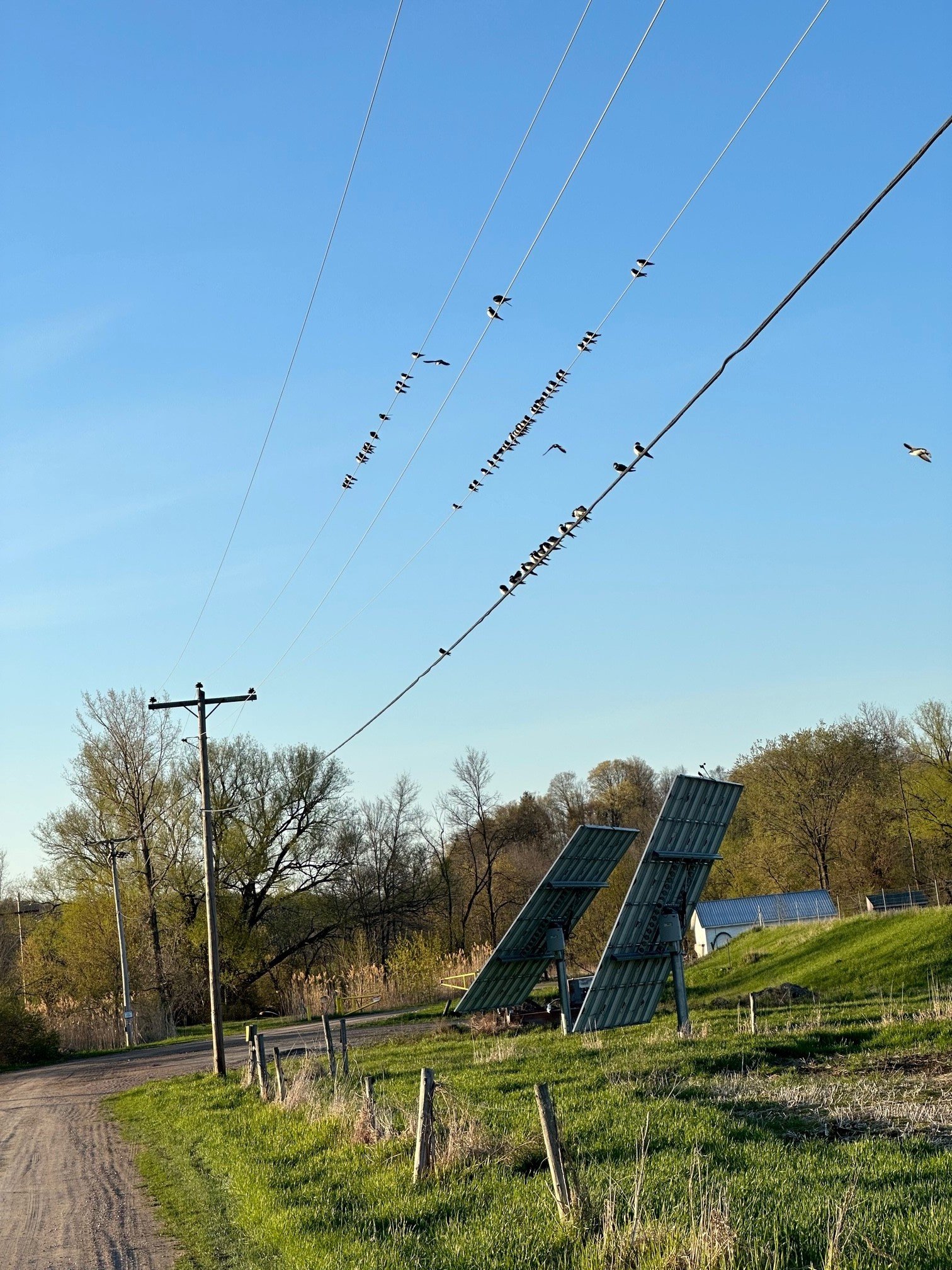Contributed by Fernando Corrada
Header image: View of Lagoon Road by Fernando Corrada
A location that is small and very easy and rewarding to explore is Lagoon Road in Hinesburg. It’s less than a mile west of the Route 116 (Hinesburg Road) and Charlotte Road traffic light intersection. The village of Hinesburg has the fortune of having several great birding hotspots within a couple of miles of Lagoon Road, like Geprag Community Park, Russell Family Trails, Hinesburg Village Cemetery, and Carse Wetlands.
Lagoon Road is a short, packed gravel street that splits two large farm fields. At the end of the road stand 32 solar tracking panels on the eastern field and a water treatment plant with two water processing lagoons behind the solar panels. The town leases the solar panels from All Earth Renewables to power the water treatment facility and the Town Hall. The water plant was built in 1969, upgraded in 2009, and now it is going through a complete transformation to meet the current Federal Clean Water Act and the Vermont Water Pollution Control Act. The new plant should be operational in late 2025. In the past two years, the operator drained two of the lagoons and covered them with soil. The second phase is about to begin, and it will significantly change the plant footprint and employ new technologies to treat the water without chlorine and other harmful chemicals. It is uncertain how much, if at all, these changes will affect the habitat.
Singing Dicksissel, photo by Fernando Corrada
Lagoon Road is a fantastic place to see shorebirds, ducks, geese, and usually every swallow species expected in Vermont. Birders have reported 171 bird species here, including Dickcissel, Vesper Sparrow, Eastern Meadowlark, Rusty Blackbird, Sora, and Greater White-fronted Goose. The area near the solar panels floods very easily, and when that happens you may see great numbers of shorebirds, especially during Spring and Fall migration. Expect to see Killdeer, Semipalmated Plover, Least Sandpiper, Semipalmated Sandpiper, Pectoral Sandpiper, Spotted Sandpiper, Solitary Sandpiper, Wilson’s Snipe, American Woodcock, and both Yellowlegs. In the remaining two water treatment lagoons (there were four one year ago), you can find Wood Duck, Mallard, Green-winged Teal, Snow Goose, Canada Goose, Spotted Sandpiper, Solitary Sandpiper, Wood Duck, Mallard, American Black Duck, and both Yellowlegs.
On the West farm field, you will see a larger set of power lines running North-South about 200 feet from the road. Perched on the wires or patrolling the field, you can observe raptors like American Kestrel, Red-tailed Hawk, Peregrine Falcon, and Merlin. Look for Eastern Kingbird, Eastern Phoebe, Willow Flycatcher, Alder Flycatcher, Least Flycatcher, Eastern Bluebird, Eastern Meadowlark, Bobolink, Brown-headed Cowbird, and Dickcissel. The grassy area next to the road usually harbors Song Sparrow, American Tree Sparrow, Chipping Sparrow, Field Sparrow, Savannah Sparrow, and Vesper Sparrow.
Tree Swallows on powerlines at Lagoon Road, photo by Fernando Corrada
Near the end of the road in the west field, you will see two separate lines of trees, with the larger one towards the back of the buildings and in front of the LaPlatte River. This area is great for Rose-breasted Grosbeak, Indigo Bunting, Yellow-rumped Warbler, Chestnut-sided Warbler, Yellow Warbler, Common Yellowthroat, American Redstart, Song Sparrow, and Swamp Sparrow. Two other spots to check for sparrows, finches, and other passerines are the marshy area left of the yellow gate at the water treatment plant and the small tree at the entrance to the West field.


